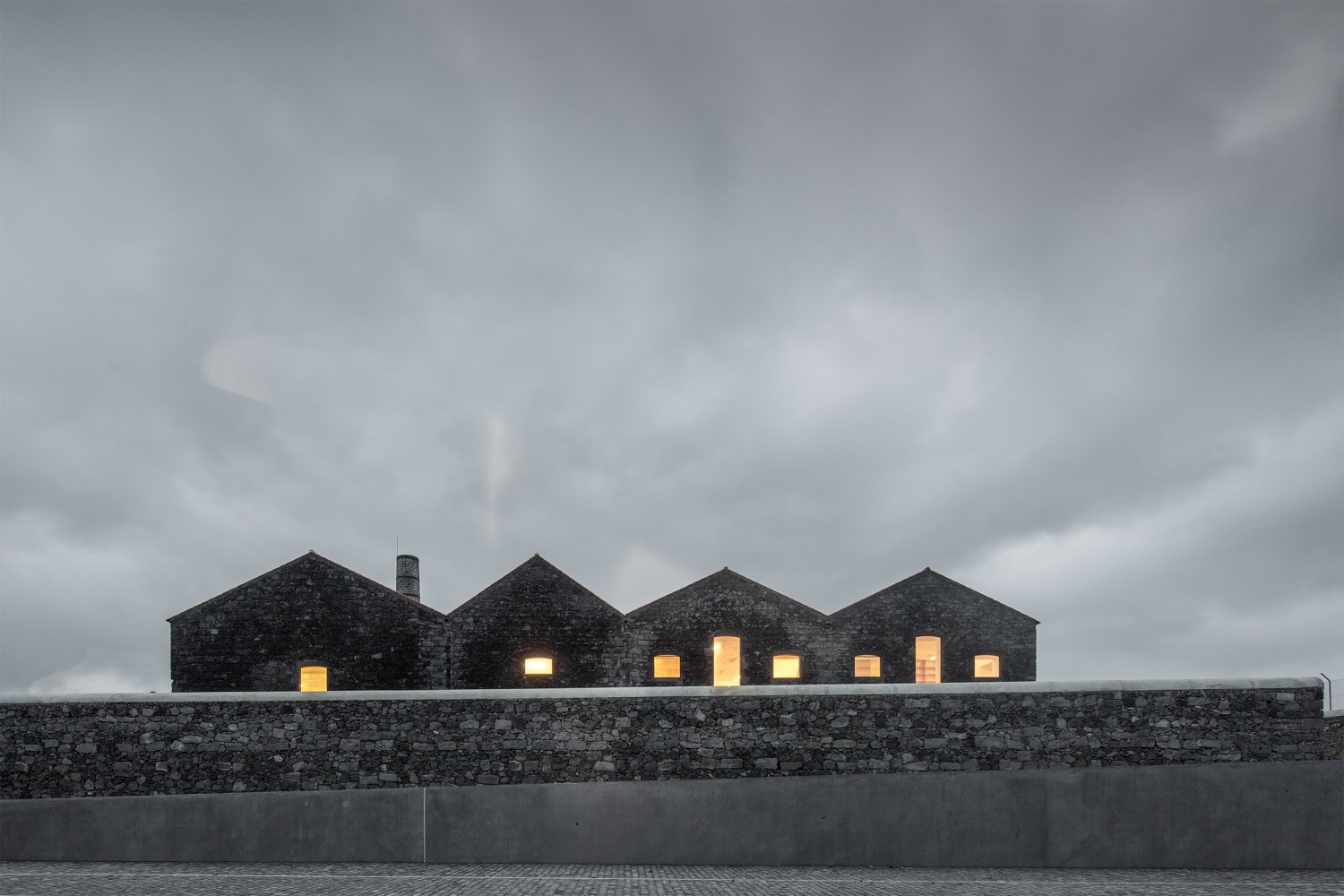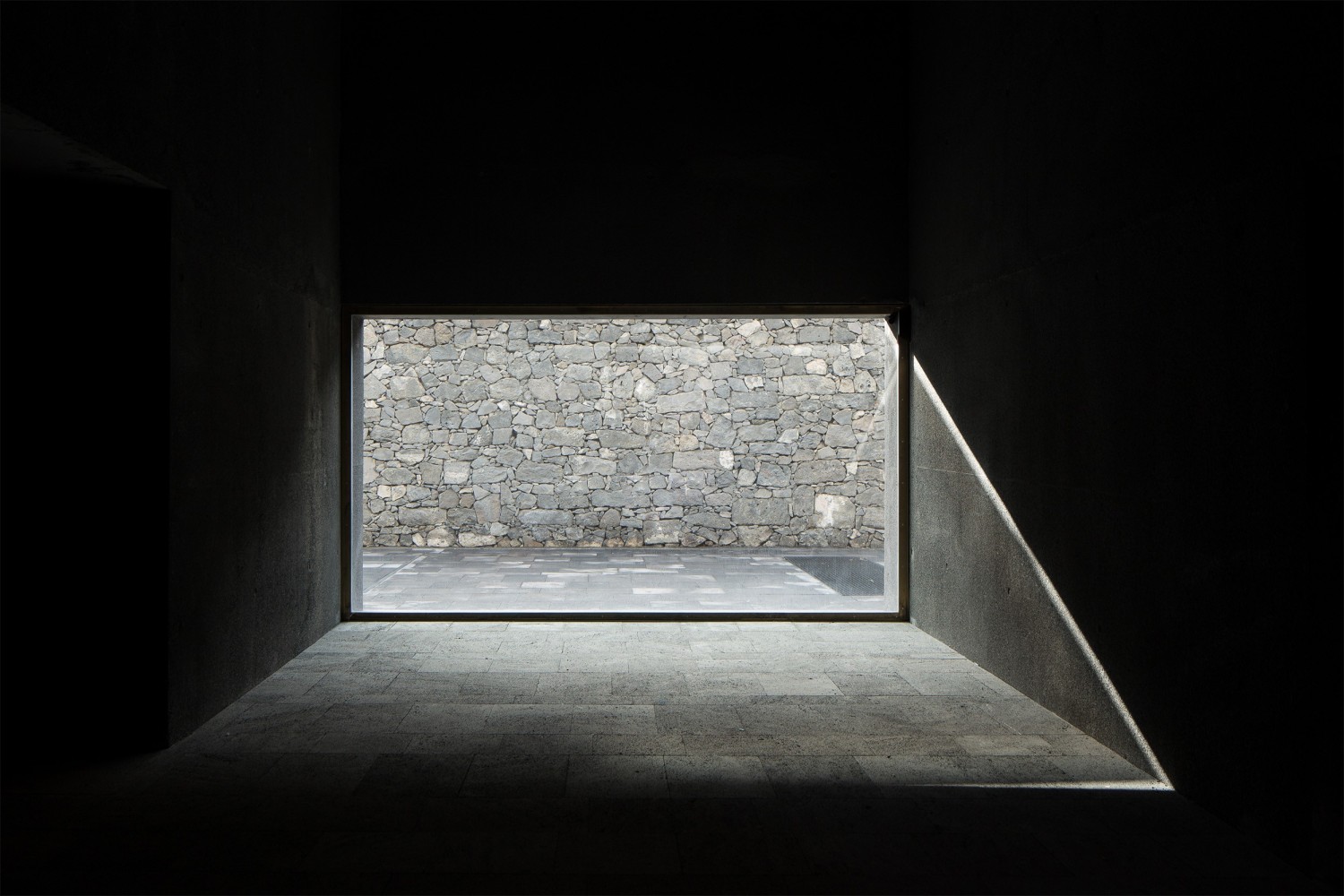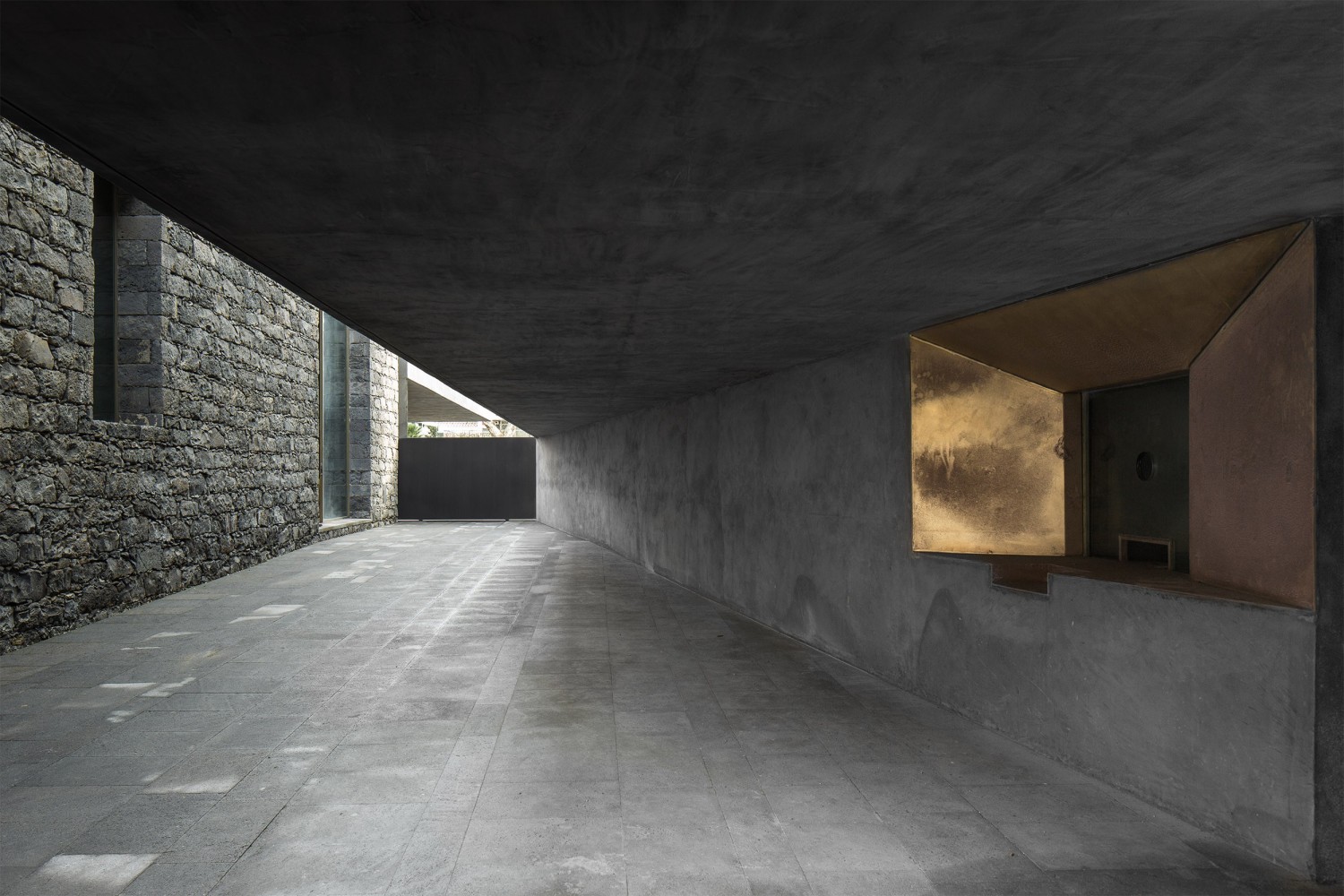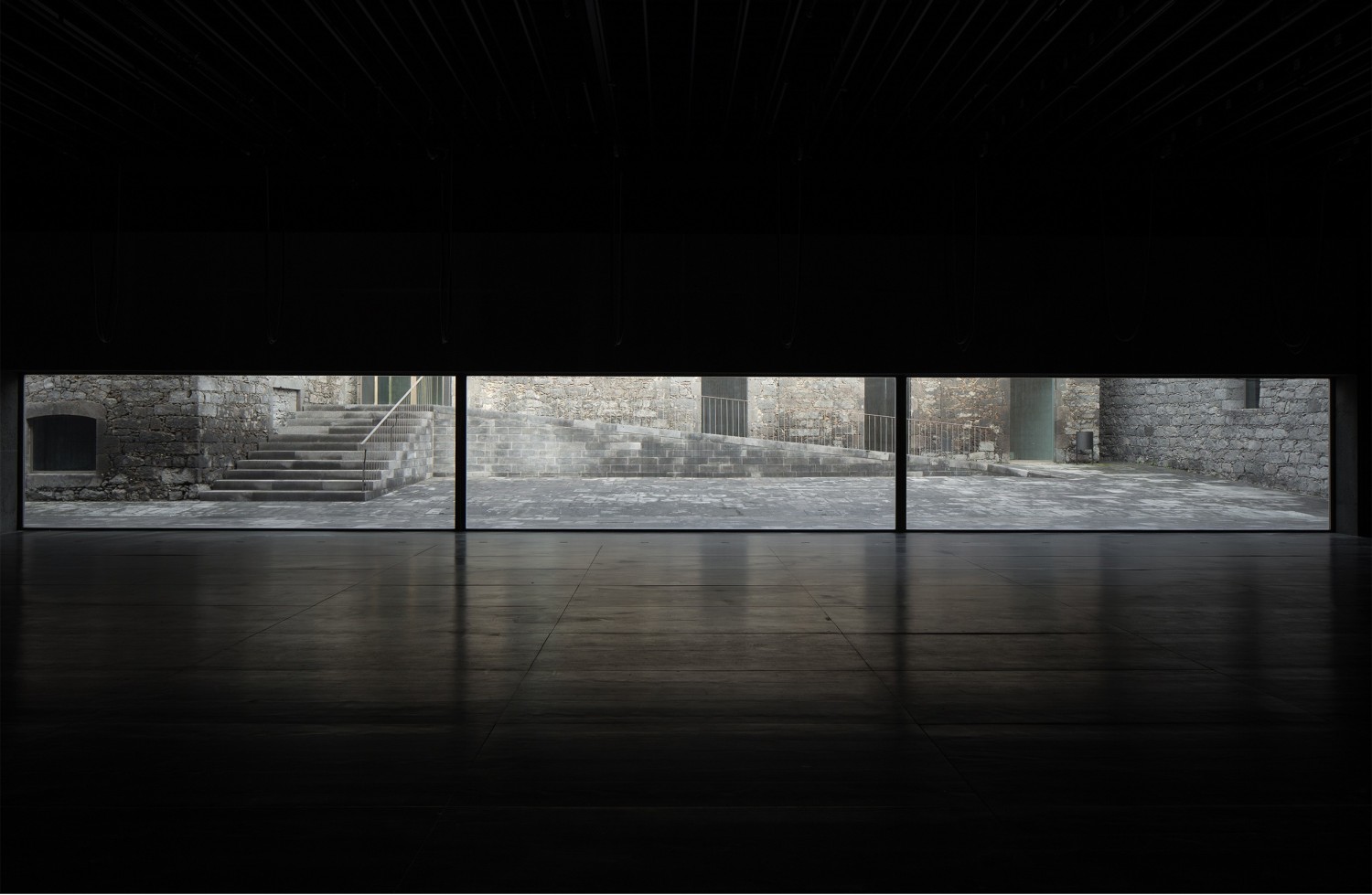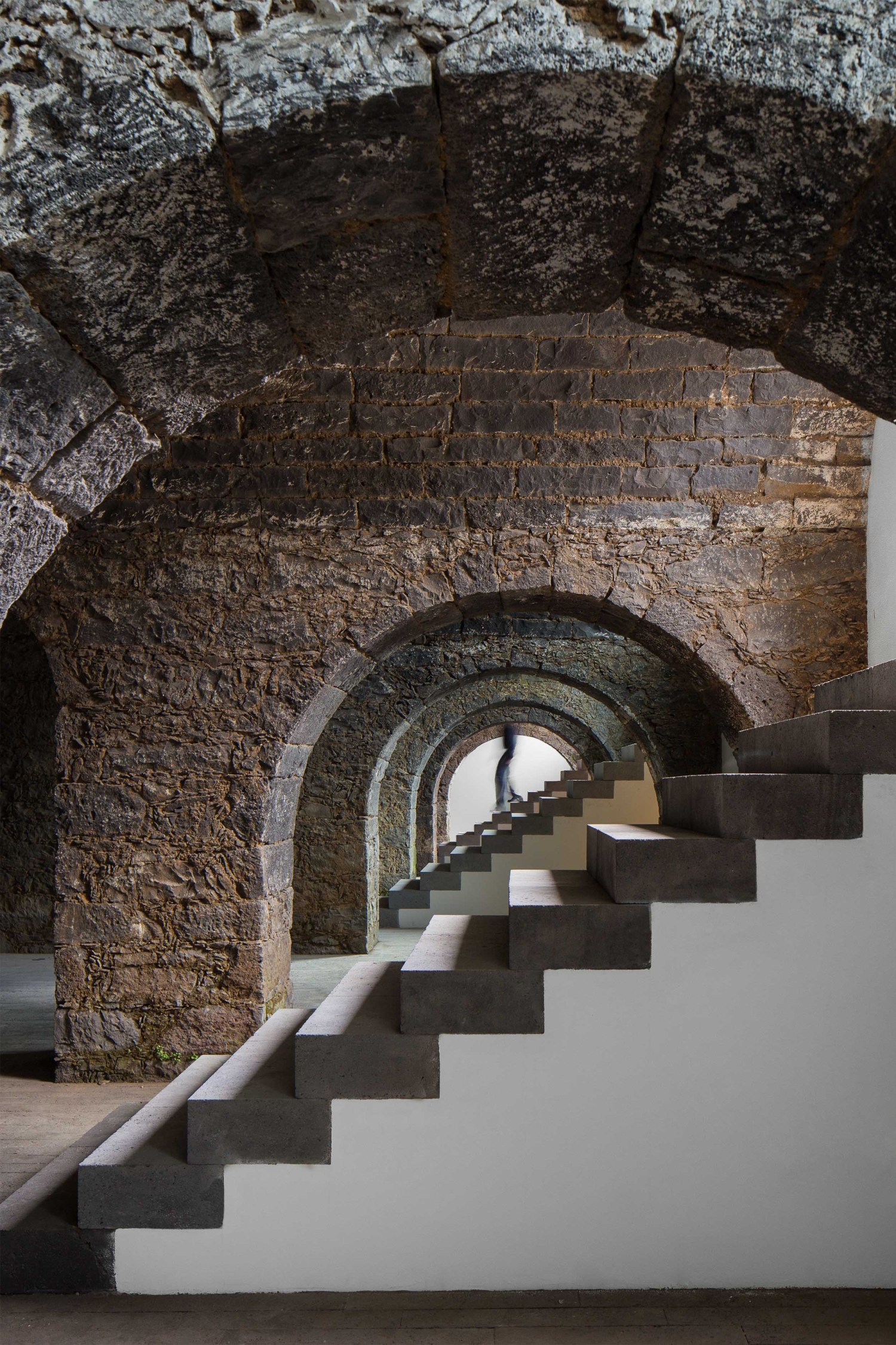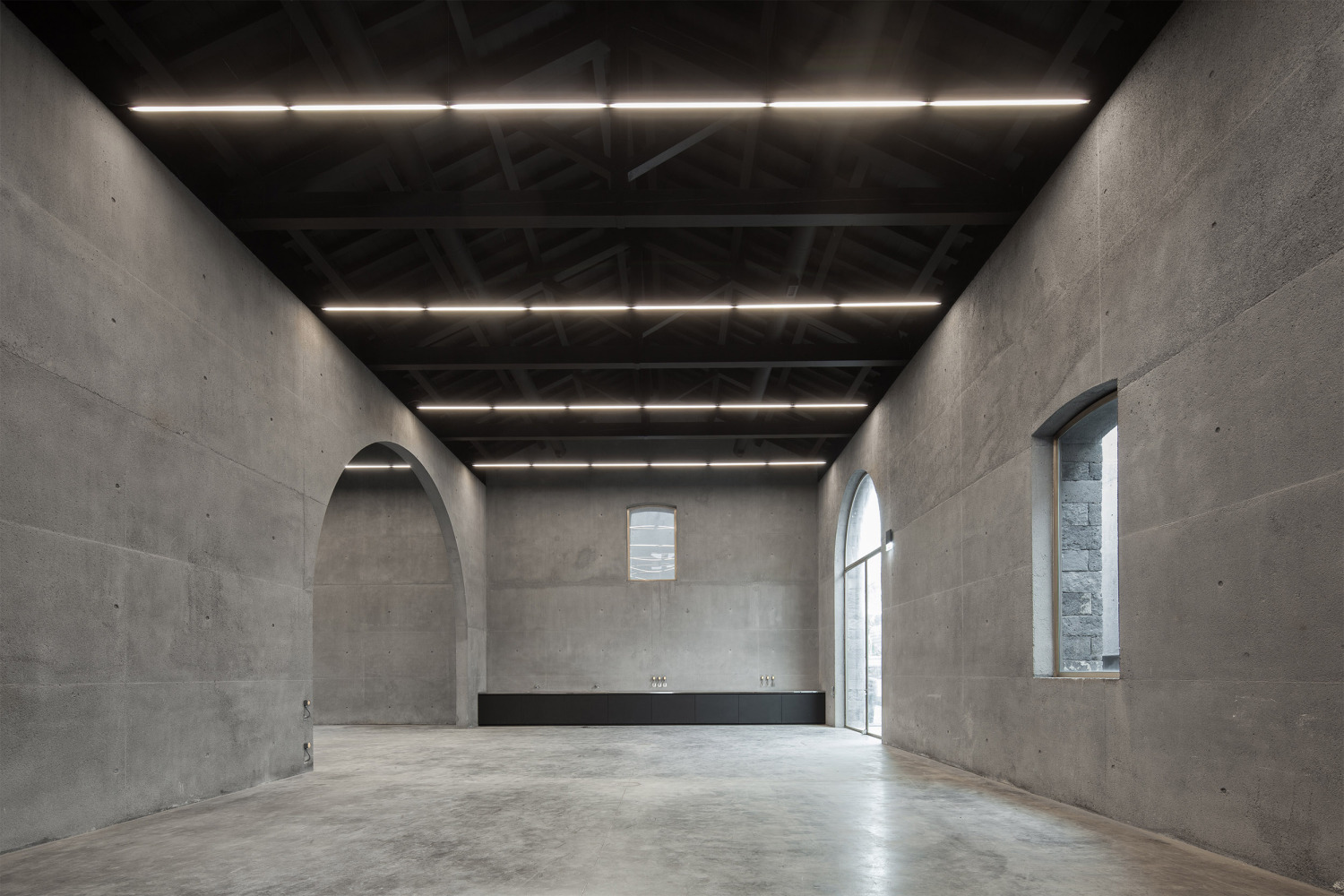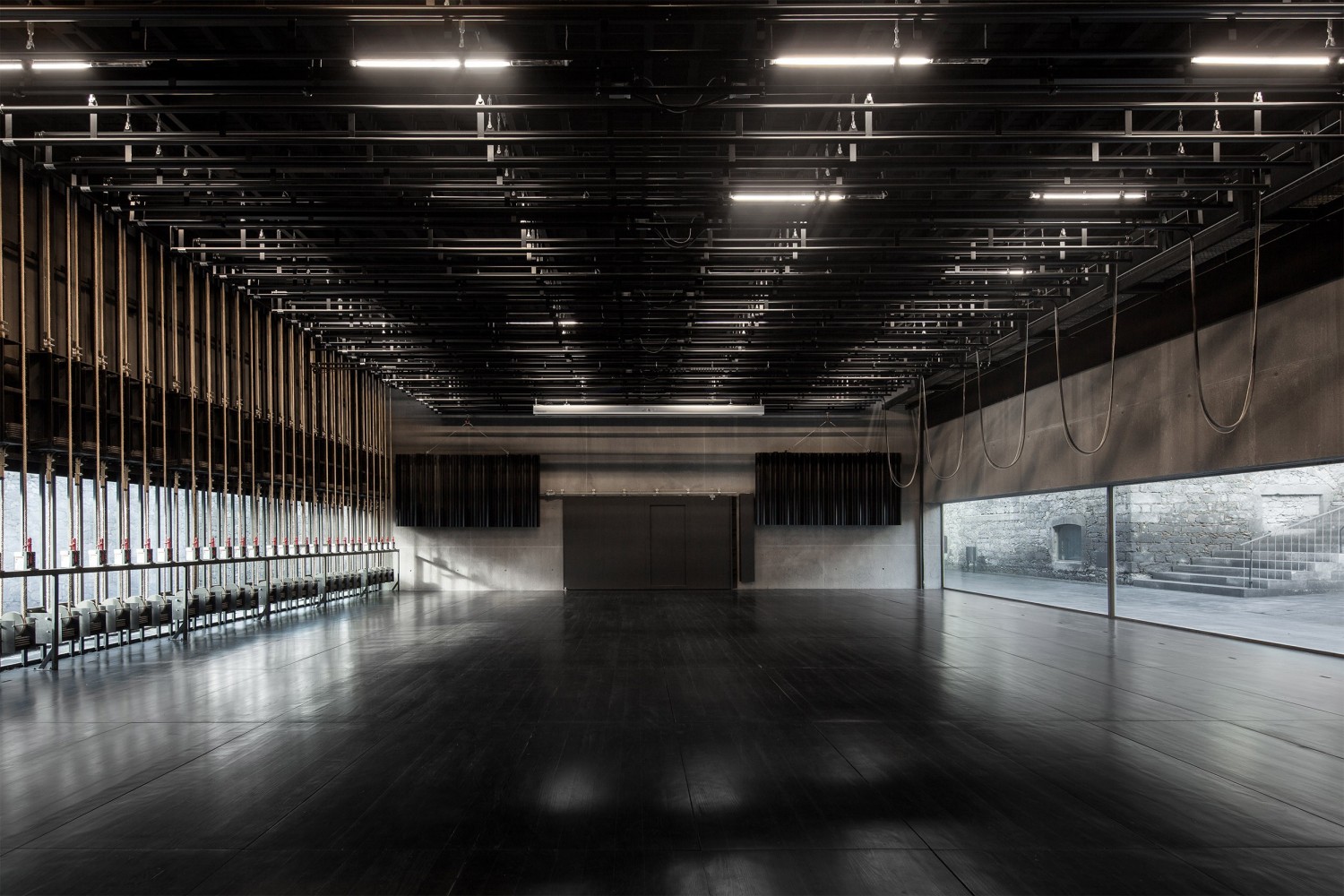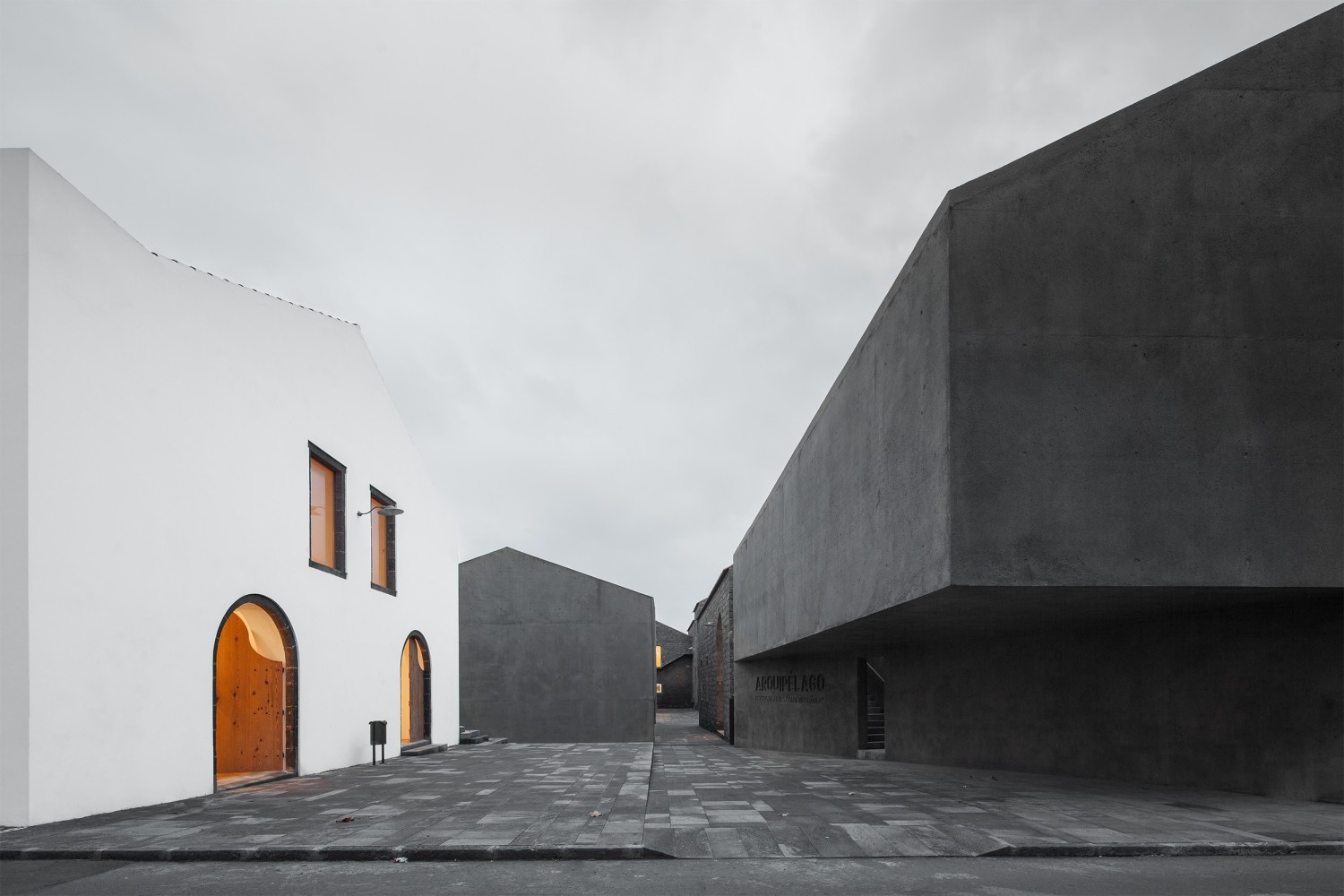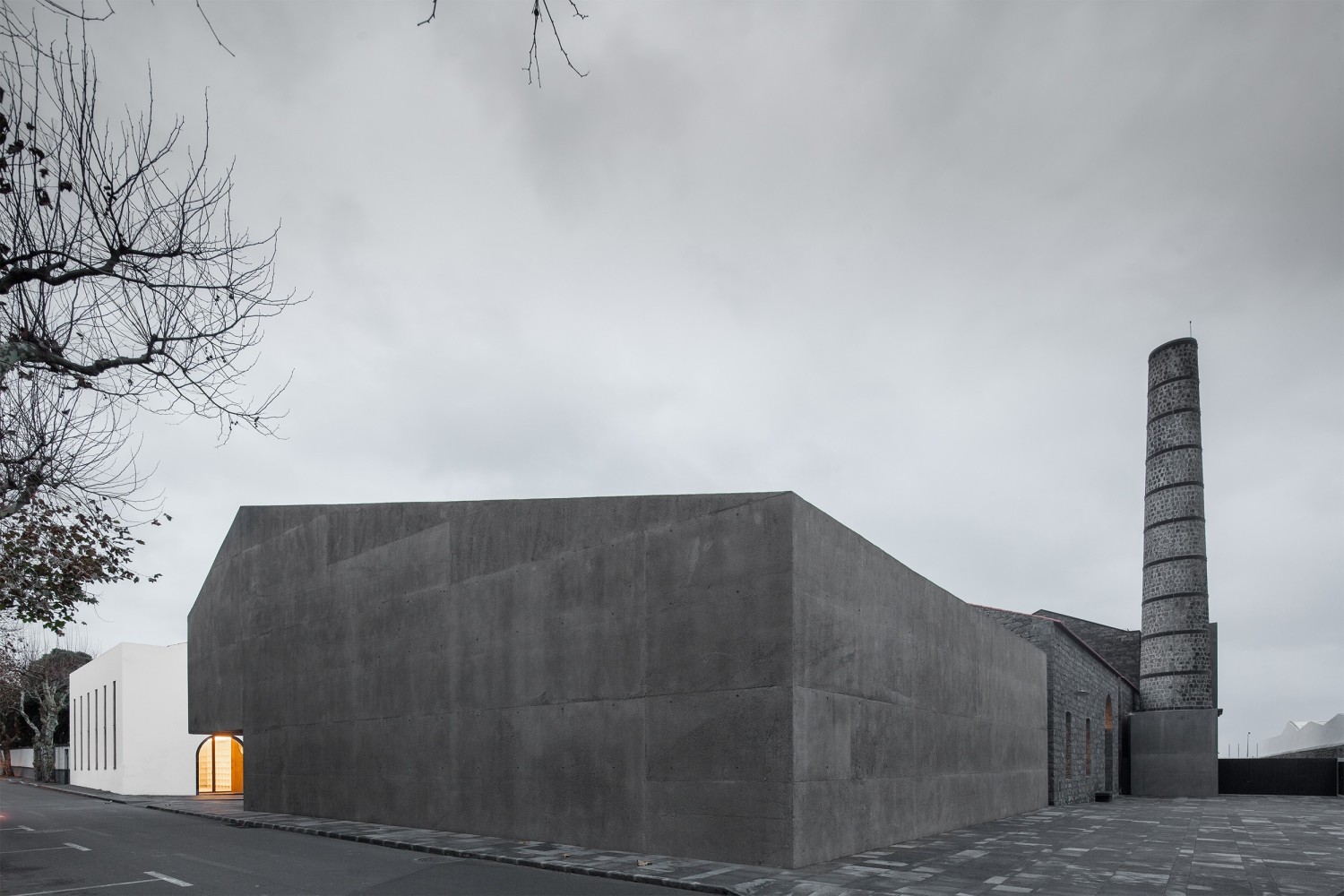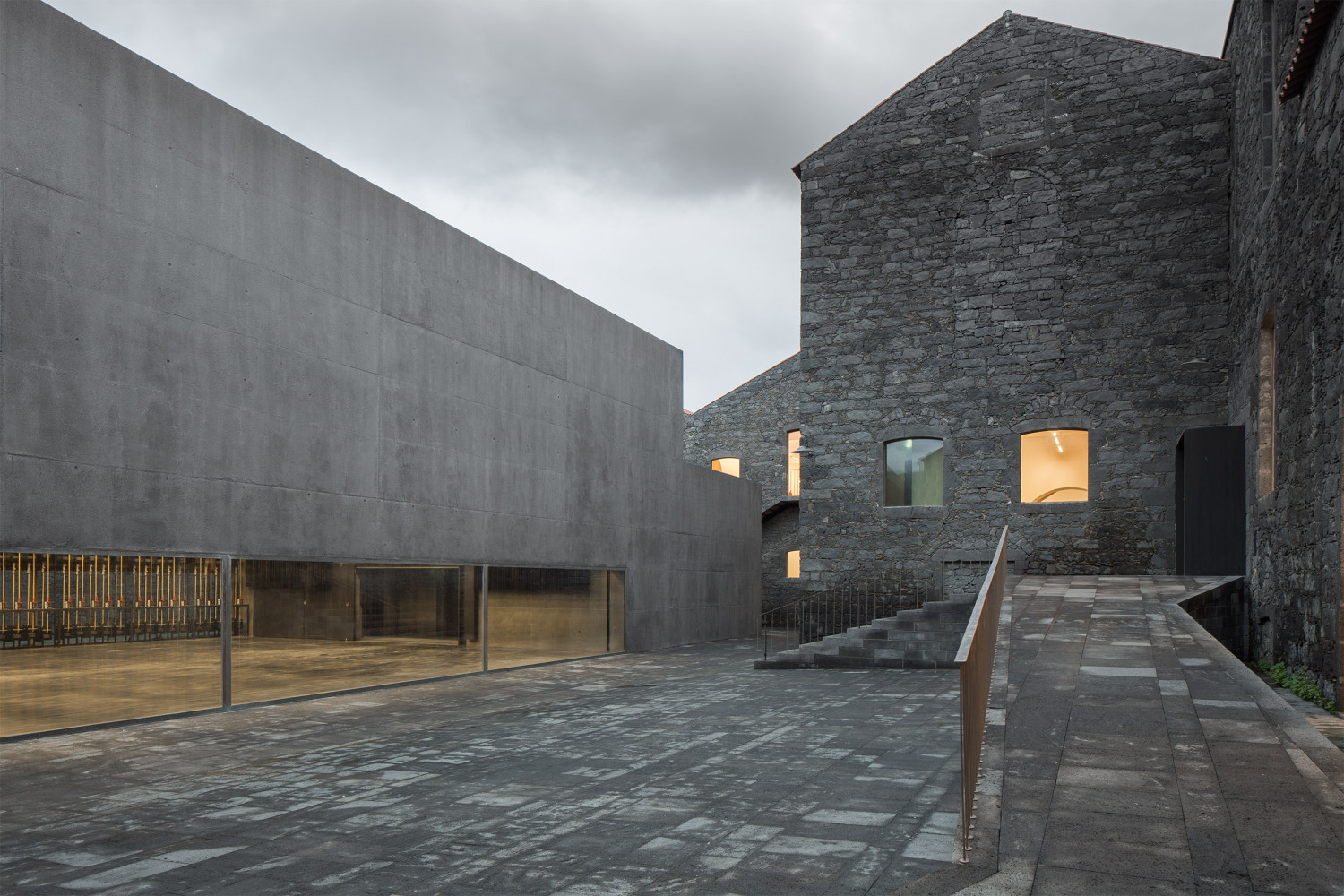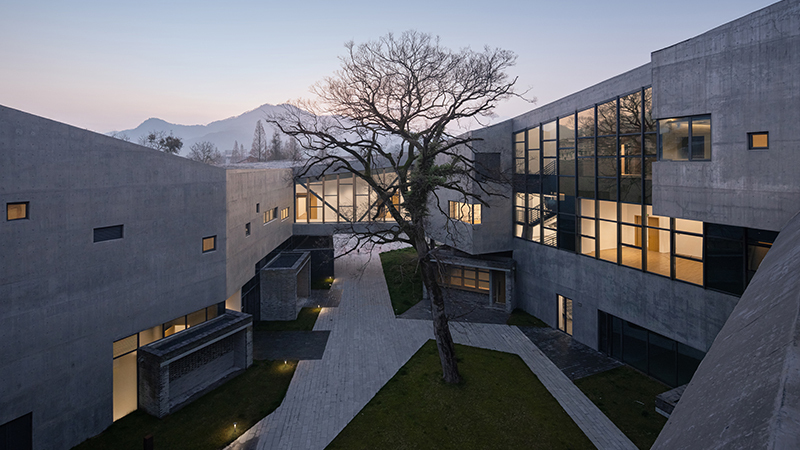| 公司: | João Mendes Ribeiro Arquitecto | 类型: | 建筑 |
|---|---|---|---|
| 地区: | 葡萄牙 | 标签: | 艺术中心 |
安静的变化与连续性策略
项目Arquipélago当代艺术中心力图将其不同规模和时间的部分结合起来,它是一个跨学科的项目,其使命是传播、创造和生产新兴文化:一个人、知识和活动的交流和界面空间。项目的设计保持了整体的工业特征,并突出了现有建筑(前酒精/烟草工厂)和新建筑(艺术文化中心、仓储设施、多功能厅/表演艺术、实验室、艺术家工作室)之间的对话。
Quiet Variation & Continuity strategies
The Arquipélago - Contemporary Arts Centre seeks to unite the different scales and times of its parts. It is a transdisciplinary project whose mission is to disseminate, create and produce emerging culture: a space of exchange and interface for people, knowledge and events. The design of Arquipélago - Contemporary Arts Centre – maintains the industrial character of the whole and highlights the dialogue between an existing building (former factory of alcohol / tobacco) and the new construction (arts and culture center, storage facilities, multipurpose hall / performing arts, laboratories, artist studios).
项目在以前的建筑和两座新建筑之间的静谧改变中获得自我,项目控制策略可以提高现有空间综合不同区域的效率和功能。这座新建筑吸收了需要的功能,但有存在一些特殊的情况,与原来建筑的空间性并不相容。
The Arquipélago - Contemporary Arts Centre acquires its identity by the quiet variation between the preexistence and the two new buildings. The containment strategy of facilities implementation enhances the spatial efficiency and hierarchical functionality of the different areas of the existing factory complex. The new buildings absorb the required functionalities, with special conditions, not compatible with the spatiality of preexisting buildings.
项目并没有夸大新旧建筑之间的差异,相反,它试图将不同规模和时间的部分统一起来,通过对建筑的形式和材料进行融合,现有的建筑以火山石为标志,而新建筑的特点是抽象的形式,没有参考或暗示任何语言,用当地的玄武岩混凝土建造,不断地与表面的纹理和皱褶的变化一起变化,形成的天井也提高了建筑的空间质量。
The project of the Arquipélago does not exaggerate the differences between the old and the new buildings. On the contrary, it seeks to unite the different scales and times of its parts throughout a pictorial manipulation of the form and materiality of the buildings - the existing constructions are marked by the volcanic stone masonry and the new buildings are characterized by an abstract form, without reference or allusion to any language, built in concrete with local basalt inert continuously working with the variation of surfaces’ textures and rugosity, complementing the mass of the buildings with the emptiness of the patios.
设计致力于现有建筑的质量,展示了新旧变化的融合,新建筑以一种宁静的方式坐落在现有建筑的旁边,强调特定时期的建筑记忆和新的补充,而不破坏或颠覆整体的空间和建设性结构,这有助于对新老建筑的过渡,同时新的方案也在一定程度上重塑了现有的建筑,使其成为大西洋中部地区的一个有意义的空间。
The design is committed to the quality of what exists, showing the typological variations - new buildings are placed next to the existing ones in a serene manner – underlining the architectonical memory of a given period and the new addition, without damaging or subverting the spatial and constructive structures of the whole. Context and contiguity contribute to the autonomy of the object. The new program reinvents the existent building, making it a meaningful space in a peripheral region in the middle of the Atlantic Ocean.
项目也为其所在的社会和文化背景增添了意义,一个新的公共空间被安置在这个中央露天广场上,在这里,艺术让人感觉舒适,模糊了私人和公共领域、休闲和工作、艺术和生活之间的界限。建筑的可持续性能通过其物质性(结构、基础设施)和吸收现有的手工制作知识来实现。采用的可持续措施是寻求为用户提供舒适的能效系统:混凝土墙的密度提供了惯性和能源效率,雨水被重复利用。
The Arquipélago - Contemporary Arts Centre adds meaning to the social and cultural context where it is built. A new Public Space is materialized in a central square/pateo where art feels comfortable and blurs the frontiers between private and public spheres, leisure and work, art and life. The aspects of the sustainable performance of the buildings were addressed through its materiality (structures, infra-structures) and the absorption of the existing handcrafted knowledge enriched by its timeless way of building. The sustainable measures adopted are passive systems that seek to provide comfort for the users: the density of the concrete walls offer inertia and energy efficiency; the rain water is reused.
Competition: 2007 (1st prize)
Project: 2007-2010
Construction: 2011- 2014
Client: Regional Directorate of Culture (DRaC) of the Regional Government of the Azores
Location: Ribeira Grande, São Miguel, Azores, Portugal
Area: 12.914 m² (9.736 m² buildings + 3.178 m² exterior arrangement)
Architecture Architects: João Mendes Ribeiro Arquitecto Lda. e Menos é Mais Arquitectos Associados, Lda.
Authors: João Mendes Ribeiro, Cristina Guedes, Francisco Vieira de Campos
Project Managers: Adalgisa Lopes, Jorge Teixeira Dias, Inês Mesquita, Filipe Catarino
Project Team (João Mendes Ribeiro Arquitecto, Lda.): Catarina Fortuna, Ana Cerqueira, Ana Rita Martins, António Ferreira da Silva, Cláudia Santos, Joana Figueiredo, João Branco Project Team (Menos é Mais Arquitectos Associados, Lda.): Cristina Maximino, João Pontes, Luís Campos, Ana Leite Fernandes, Mariana Sendas, Pedro Costa, Inês Ferreira, João Fernandes
Image post-production/Competition: Diogo Laje, Óscar Ribas, Ricardo Cardoso (Estúdio Goma)
Structural Engineer: Hipólito Sousa, Jerónimo Botelho, Pedro Pinto (SOPSEC,SA)
Hydraulic Installations: Diogo Leite, Filipe Freitas, Jorge Rocha (SOPSEC,SA)
Electrical Installations: Raul Serafim, Hélder Ferreira (Raul Serafim & Associados, Lda)
Security Measures and Fire Consulting: Maria da Luz Santiago (Raul Serafim & Associados, Lda)
Mechanical Installations: Raul Bessa, Ricardo Carreto (GET, Lda.) Gas
Installations: José Pinto (SOPSEC,SA)
Programming consulting: Elisa Babo (Quaternaire), Miguel Von Haff Pérez, Marta Almeida
Conservation and Restoration Consulting: Gabriella Casella (Cariátides)
Acoustic consulting: Rui Calejo, Eduarda Silva, Filomena Macedo (SOPSEC,SA)
Thermal consulting: André Apolinário (SOPSEC,SA)
Stage Mechanics Consulting: João Aidos
Landscaping: Ana Barroco, Rui Figueiredo (Quaternaire)
Constructor: Consórcio Somague, Marques S.A. e Tecnovia.
Supervising: Pedro Câmara (Eng. Tavares Vieira, Lda.)
Models: Menos é Mais Arquitectos Associados, Lda.
Photography: José Campos
更新日期:2020-08-28 11:03:33
非常感谢 João Mendes Ribeiro Arquitecto 带来的精彩项目, 查阅更多Appreciations towards João Mendes Ribeiro Arquitecto for sharing wonderful work on hhlloo. Click to see more works!
